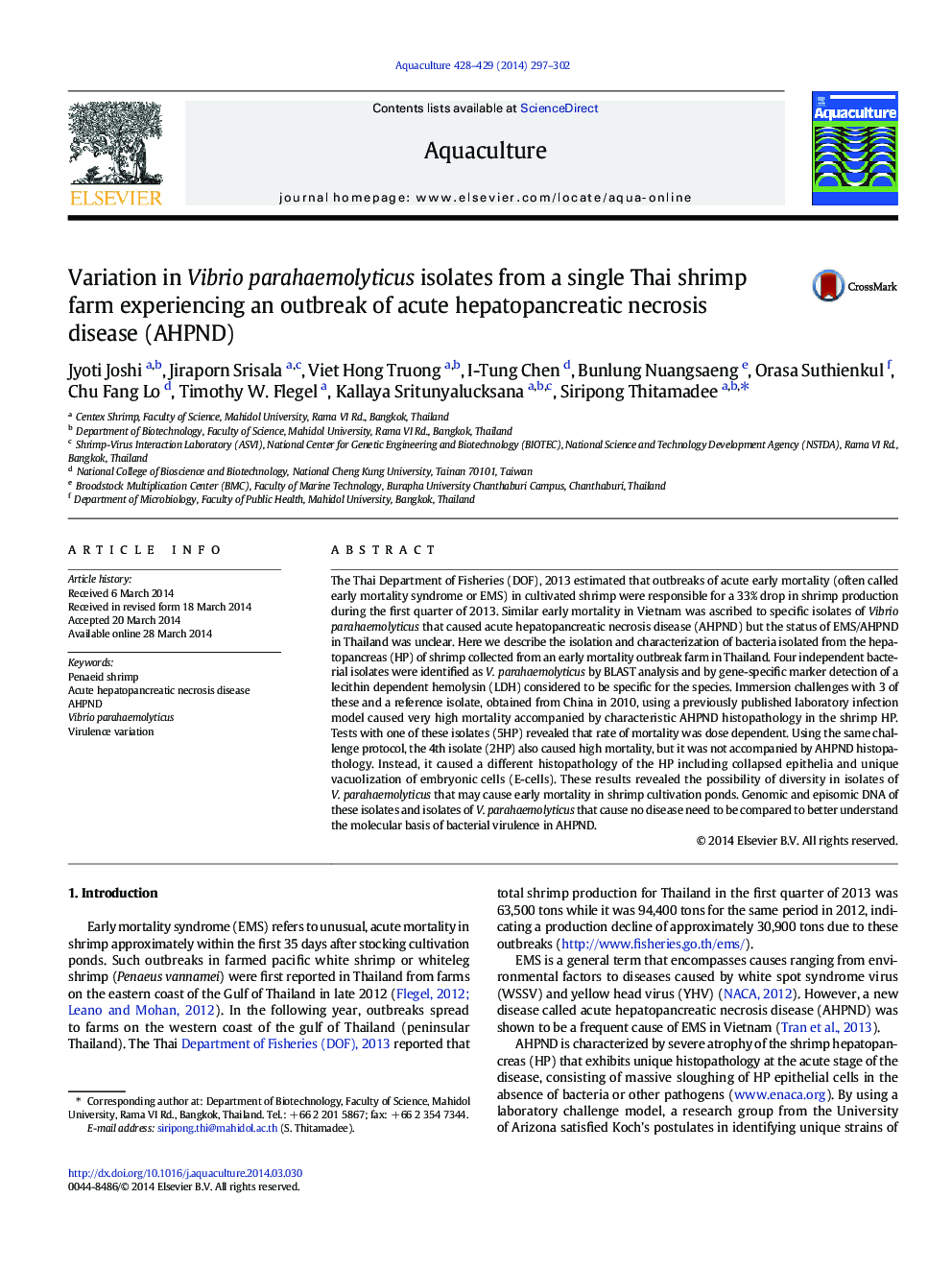| Article ID | Journal | Published Year | Pages | File Type |
|---|---|---|---|---|
| 8495045 | Aquaculture | 2014 | 6 Pages |
Abstract
The Thai Department of Fisheries (DOF), 2013 estimated that outbreaks of acute early mortality (often called early mortality syndrome or EMS) in cultivated shrimp were responsible for a 33% drop in shrimp production during the first quarter of 2013. Similar early mortality in Vietnam was ascribed to specific isolates of Vibrio parahaemolyticus that caused acute hepatopancreatic necrosis disease (AHPND) but the status of EMS/AHPND in Thailand was unclear. Here we describe the isolation and characterization of bacteria isolated from the hepatopancreas (HP) of shrimp collected from an early mortality outbreak farm in Thailand. Four independent bacterial isolates were identified as V. parahaemolyticus by BLAST analysis and by gene-specific marker detection of a lecithin dependent hemolysin (LDH) considered to be specific for the species. Immersion challenges with 3 of these and a reference isolate, obtained from China in 2010, using a previously published laboratory infection model caused very high mortality accompanied by characteristic AHPND histopathology in the shrimp HP. Tests with one of these isolates (5HP) revealed that rate of mortality was dose dependent. Using the same challenge protocol, the 4th isolate (2HP) also caused high mortality, but it was not accompanied by AHPND histopathology. Instead, it caused a different histopathology of the HP including collapsed epithelia and unique vacuolization of embryonic cells (E-cells). These results revealed the possibility of diversity in isolates of V. parahaemolyticus that may cause early mortality in shrimp cultivation ponds. Genomic and episomic DNA of these isolates and isolates of V. parahaemolyticus that cause no disease need to be compared to better understand the molecular basis of bacterial virulence in AHPND.
Related Topics
Life Sciences
Agricultural and Biological Sciences
Aquatic Science
Authors
Jyoti Joshi, Jiraporn Srisala, Viet Hong Truong, I-Tung Chen, Bunlung Nuangsaeng, Orasa Suthienkul, Chu Fang Lo, Timothy W. Flegel, Kallaya Sritunyalucksana, Siripong Thitamadee,
